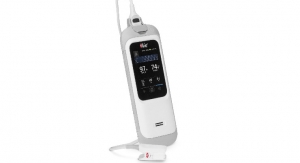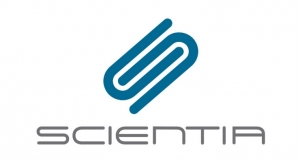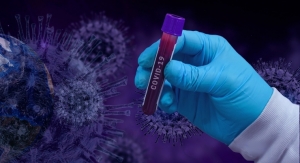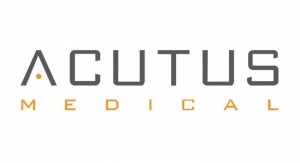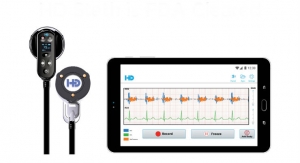Scott Gottlieb, M.D. , Commissioner, U.S. Food and Drug Administration04.03.19
Artificial intelligence and machine learning have the potential to fundamentally transform the delivery of health care. As technology and science advance, we can expect to see earlier disease detection, more accurate diagnosis, more targeted therapies and significant improvements in personalized medicine.
The ability of artificial intelligence and machine learning software to learn from real-world feedback and improve its performance is spurring innovation and leading to the development of novel medical devices.
Today, we’re announcing steps to consider a new regulatory framework specifically tailored to promote the development of safe and effective medical devices that use advanced artificial intelligence algorithms.
Artificial intelligence algorithms are software that can learn from and act on data. These types of algorithms are already being used to aid in screening for diseases and to provide treatment recommendations. Last year, the FDA authorized an artificial intelligence based device for detecting diabetic retinopathy, an eye disease that can cause vision loss. The agency also authorized a second artificial intelligence based device for alerting providers of a potential stroke in patients.
The authorization of these technologies was a harbinger of progress that the FDA expects to see as more medical devices incorporate advanced artificial intelligence algorithms to improve their performance and safety. Artificial intelligence has helped transform industries like finance and manufacturing, and I’m confident that these technologies will have a profound and positive impact on health care. I can envision a world where, one day, artificial intelligence can help detect and treat challenging health problems, for example by recognizing the signs of disease well in advance of what we can do today. These tools can provide more time for intervention, identifying effective therapies and ultimately saving lives.
We’re taking the first step toward developing a novel and tailored approach to help developers bring artificial intelligence devices to market by releasing a discussion paper. Other steps in the future will include issuing draft guidance that will be informed by the input we receive. Our approach will focus on the continually-evolving nature of these promising technologies. We plan to apply our current authorities in new ways to keep up with the rapid pace of innovation and ensure the safety of these devices.
The artificial intelligence technologies granted marketing authorization and cleared by the agency so far are generally called “locked” algorithms that don’t continually adapt or learn every time the algorithm is used. These locked algorithms are modified by the manufacturer at intervals, which includes “training” of the algorithm using new data, followed by manual verification and validation of the updated algorithm. But there’s a great deal of promise beyond locked algorithms that’s ripe for application in the health care space, and which requires careful oversight to ensure the benefits of these advanced technologies outweigh the risks to patients. These machine learning algorithms that continually evolve, often called “adaptive” or “continuously learning” algorithms, don’t need manual modification to incorporate learning or updates. Adaptive algorithms can learn from new user data presented to the algorithm through real-world use. For example, an algorithm that detects breast cancer lesions on mammograms could learn to improve the confidence with which it identifies lesions as cancerous or may learn to identify specific subtypes of breast cancer by continually learning from real-world use and feedback.
We are exploring a framework that would allow for modifications to algorithms to be made from real-world learning and adaptation, while still ensuring safety and effectiveness of the software as a medical device is maintained. A new approach to these technologies would address the need for the algorithms to learn and adapt when used in the real world. It would be a more tailored fit than our existing regulatory paradigm for software as a medical device. For traditional software as a medical device, when modifications are made that could significantly affect the safety or effectiveness of the device, a sponsor must make a submission demonstrating the safety and effectiveness of the modifications. With artificial intelligence, because the device evolves based on what it learns while it’s in real-world use, we’re working to develop an appropriate framework that allows the software to evolve in ways to improve its performance while ensuring that changes meet our gold standard for safety and effectiveness throughout the product’s lifecycle—from premarket design throughout the device’s use on the market. Our ideas are the foundational first step to developing a total product lifecycle approach to regulating these algorithms that use real-world data to adapt and improve.
We’re considering how an approach that enables the evaluation and monitoring of a software product from its premarket development to post-market performance could provide reasonable assurance of safety and effectiveness and allow the FDA’s regulatory oversight to embrace the iterative nature of these artificial intelligence products while ensuring that our standards for safety and effectiveness are maintained. This first step in developing our approach outlines information specific to devices that include artificial intelligence algorithms that make real-world modifications that the agency might require for premarket review. They include the algorithm’s performance, the manufacturer’s plan for modifications and the ability of the manufacturer to manage and control risks of the modifications.
The agency may also intend to review what’s referred to as software’s predetermined change control plan. The predetermined change control plan would provide detailed information to the agency about the types of anticipated modifications based on the algorithm’s re-training and update strategy, and the associated methodology being used to implement those changes in a controlled manner that manages risks to patients. Consistent with our existing quality systems regulation, the agency expects software developers to have an established quality system that is geared towards developing, delivering and maintaining high-quality products throughout the lifecycle that conforms to the agency’s standards and regulations.
The goal of the framework is to assure that ongoing algorithm changes follow pre-specified performance objectives and change control plans, use a validation process that ensures improvements to the performance, safety, and effectiveness of the artificial intelligence software, and includes real-world monitoring of performance once the device is on the market to ensure safety and effectiveness are maintained. We’re exploring this approach because we believe that it will enable beneficial and innovative artificial intelligence software to come to market while still ensuring the device’s benefits continue to outweigh its risks.
We have more work to do to build out this initial set of ideas and we’ll rely on comments and feedback from experts and stakeholders in this space to help inform the agency as we continue to think about how we’ll regulate artificial intelligence technologies to improve patient care. We anticipate several more steps in the future, including issuing draft guidance that’ll be informed by the feedback on today’s discussion paper.
As with all of our efforts in digital health, collaboration will be key to developing this appropriate framework. We encourage feedback and welcome a diversity of opinions and thoughtful discourse, which will contribute to building the foundation of this regulatory paradigm. As algorithms evolve, the FDA must also modernize our approach to regulating these products. We must ensure that we can continue to provide a gold standard of safety and effectiveness. We believe that guidance from the agency will help advance the development of these innovative products.
We’ve taken similar steps to advance other novel oversight frameworks for new technologies. Our Digital Health Innovation Action Plan laid the groundwork for new approaches to foster innovation in digital health. We’re building our Digital Health Center of Excellence to develop more efficient ways to ensure the safety and effectiveness of technologies like smart watches with medical apps. Our Software Precertification Pilot Program is allowing us to test a new approach for product review. While I know there are more steps to take in our regulation of artificial intelligence algorithms, the first step taken today will help promote ideas on the development of safe, beneficial and innovative medical products.
The ability of artificial intelligence and machine learning software to learn from real-world feedback and improve its performance is spurring innovation and leading to the development of novel medical devices.
Today, we’re announcing steps to consider a new regulatory framework specifically tailored to promote the development of safe and effective medical devices that use advanced artificial intelligence algorithms.
Artificial intelligence algorithms are software that can learn from and act on data. These types of algorithms are already being used to aid in screening for diseases and to provide treatment recommendations. Last year, the FDA authorized an artificial intelligence based device for detecting diabetic retinopathy, an eye disease that can cause vision loss. The agency also authorized a second artificial intelligence based device for alerting providers of a potential stroke in patients.
The authorization of these technologies was a harbinger of progress that the FDA expects to see as more medical devices incorporate advanced artificial intelligence algorithms to improve their performance and safety. Artificial intelligence has helped transform industries like finance and manufacturing, and I’m confident that these technologies will have a profound and positive impact on health care. I can envision a world where, one day, artificial intelligence can help detect and treat challenging health problems, for example by recognizing the signs of disease well in advance of what we can do today. These tools can provide more time for intervention, identifying effective therapies and ultimately saving lives.
We’re taking the first step toward developing a novel and tailored approach to help developers bring artificial intelligence devices to market by releasing a discussion paper. Other steps in the future will include issuing draft guidance that will be informed by the input we receive. Our approach will focus on the continually-evolving nature of these promising technologies. We plan to apply our current authorities in new ways to keep up with the rapid pace of innovation and ensure the safety of these devices.
The artificial intelligence technologies granted marketing authorization and cleared by the agency so far are generally called “locked” algorithms that don’t continually adapt or learn every time the algorithm is used. These locked algorithms are modified by the manufacturer at intervals, which includes “training” of the algorithm using new data, followed by manual verification and validation of the updated algorithm. But there’s a great deal of promise beyond locked algorithms that’s ripe for application in the health care space, and which requires careful oversight to ensure the benefits of these advanced technologies outweigh the risks to patients. These machine learning algorithms that continually evolve, often called “adaptive” or “continuously learning” algorithms, don’t need manual modification to incorporate learning or updates. Adaptive algorithms can learn from new user data presented to the algorithm through real-world use. For example, an algorithm that detects breast cancer lesions on mammograms could learn to improve the confidence with which it identifies lesions as cancerous or may learn to identify specific subtypes of breast cancer by continually learning from real-world use and feedback.
We are exploring a framework that would allow for modifications to algorithms to be made from real-world learning and adaptation, while still ensuring safety and effectiveness of the software as a medical device is maintained. A new approach to these technologies would address the need for the algorithms to learn and adapt when used in the real world. It would be a more tailored fit than our existing regulatory paradigm for software as a medical device. For traditional software as a medical device, when modifications are made that could significantly affect the safety or effectiveness of the device, a sponsor must make a submission demonstrating the safety and effectiveness of the modifications. With artificial intelligence, because the device evolves based on what it learns while it’s in real-world use, we’re working to develop an appropriate framework that allows the software to evolve in ways to improve its performance while ensuring that changes meet our gold standard for safety and effectiveness throughout the product’s lifecycle—from premarket design throughout the device’s use on the market. Our ideas are the foundational first step to developing a total product lifecycle approach to regulating these algorithms that use real-world data to adapt and improve.
We’re considering how an approach that enables the evaluation and monitoring of a software product from its premarket development to post-market performance could provide reasonable assurance of safety and effectiveness and allow the FDA’s regulatory oversight to embrace the iterative nature of these artificial intelligence products while ensuring that our standards for safety and effectiveness are maintained. This first step in developing our approach outlines information specific to devices that include artificial intelligence algorithms that make real-world modifications that the agency might require for premarket review. They include the algorithm’s performance, the manufacturer’s plan for modifications and the ability of the manufacturer to manage and control risks of the modifications.
The agency may also intend to review what’s referred to as software’s predetermined change control plan. The predetermined change control plan would provide detailed information to the agency about the types of anticipated modifications based on the algorithm’s re-training and update strategy, and the associated methodology being used to implement those changes in a controlled manner that manages risks to patients. Consistent with our existing quality systems regulation, the agency expects software developers to have an established quality system that is geared towards developing, delivering and maintaining high-quality products throughout the lifecycle that conforms to the agency’s standards and regulations.
The goal of the framework is to assure that ongoing algorithm changes follow pre-specified performance objectives and change control plans, use a validation process that ensures improvements to the performance, safety, and effectiveness of the artificial intelligence software, and includes real-world monitoring of performance once the device is on the market to ensure safety and effectiveness are maintained. We’re exploring this approach because we believe that it will enable beneficial and innovative artificial intelligence software to come to market while still ensuring the device’s benefits continue to outweigh its risks.
We have more work to do to build out this initial set of ideas and we’ll rely on comments and feedback from experts and stakeholders in this space to help inform the agency as we continue to think about how we’ll regulate artificial intelligence technologies to improve patient care. We anticipate several more steps in the future, including issuing draft guidance that’ll be informed by the feedback on today’s discussion paper.
As with all of our efforts in digital health, collaboration will be key to developing this appropriate framework. We encourage feedback and welcome a diversity of opinions and thoughtful discourse, which will contribute to building the foundation of this regulatory paradigm. As algorithms evolve, the FDA must also modernize our approach to regulating these products. We must ensure that we can continue to provide a gold standard of safety and effectiveness. We believe that guidance from the agency will help advance the development of these innovative products.
We’ve taken similar steps to advance other novel oversight frameworks for new technologies. Our Digital Health Innovation Action Plan laid the groundwork for new approaches to foster innovation in digital health. We’re building our Digital Health Center of Excellence to develop more efficient ways to ensure the safety and effectiveness of technologies like smart watches with medical apps. Our Software Precertification Pilot Program is allowing us to test a new approach for product review. While I know there are more steps to take in our regulation of artificial intelligence algorithms, the first step taken today will help promote ideas on the development of safe, beneficial and innovative medical products.






